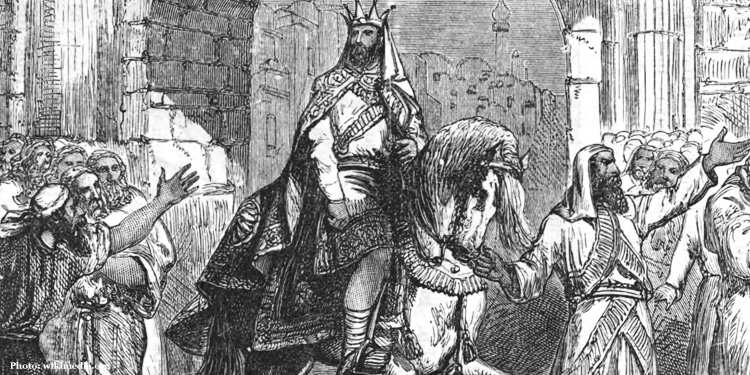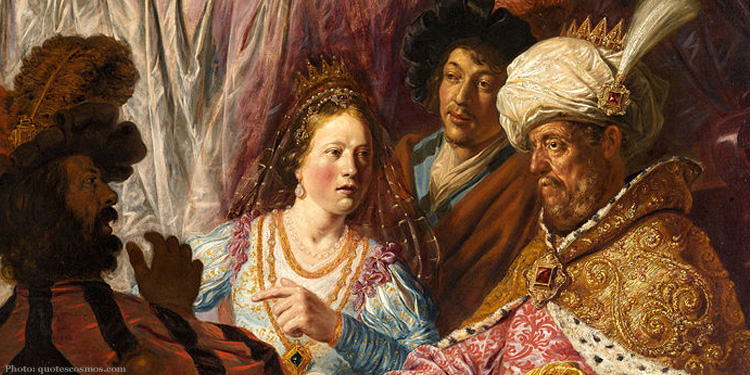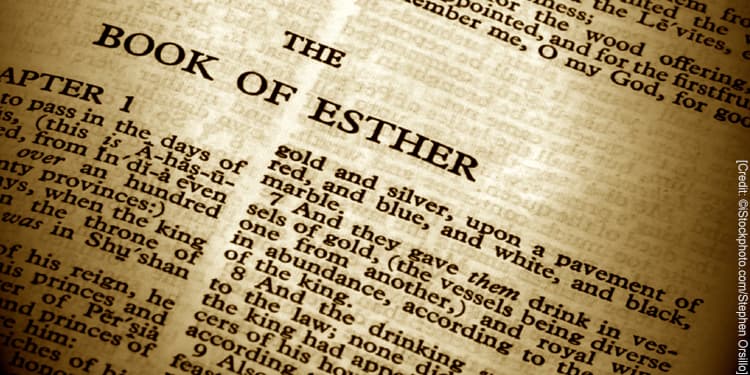What Is Purim?
The Fellowship | March 20, 2024
Purim is one of the most joyous holidays on the Jewish calendar. During the Purim holiday celebration, Jews participate in a boisterous public reading of the biblical book of Esther, deliver baskets of food and drink to friends, eat hat-shaped cookies called Hamantaschen after the villain in the story, perform plays and parodies, and dress up in costume.
Though the revelry is often compared to our American Halloween or Mardi Gras, the inspiration for this Jewish holiday held early each spring (the 14th day of the month of Adar on the Jewish calendar) is actually quite serious: a time of grave danger for the Jewish people, and an inspiring Jewish woman named Esther who displayed great faith and courage to save them.
An Ancient Enemy

The biblical Book of Esther, or Megillat Esther in Hebrew, tells the story of Purim. The heroes of the story are Esther, a beautiful young Jewish orphan living in Persia, and her cousin Mordecai, who raised Esther as if she were his own daughter. After King Xerxes divorced his first wife, Queen Vashti, for not obeying his commands, Esther was one of many young women brought to the royal harem to be considered as the new queen.
Thankfully, Mordecai was one of the king’s advisors, and he coached Esther into finding favor before the king. King Xerxes loved Esther and made her his queen, but on her cousin’s advice, Esther kept her true identity as a Jew hidden from the king.
The story takes a more sinister turn when Haman, another of the king’s top advisors, comes on the scene. He was an evil man and a descendant of the Amalekites, the ancient enemies of the Israelites. (Check out Exodus 17:8-14.) While the king’s other officials bowed to Haman in respect, Mordecai refused to do so because he bowed only before God.
That infuriated Haman, so he plotted to destroy all the Jewish people in revenge. He told the king, “There is a certain people dispersed among the peoples in all the provinces of your kingdom who keep themselves separate. Their customs are different from those of all other people, and they do not obey the king’s laws; it is not in the king’s best interest to tolerate them” (Esther 3:8). The king handed over the fate of the Jewish people to Haman, who planned to kill them all.
Purim, which means “lots” in Hebrew, gets its name from the lots cast by Haman to determine the month on which the Jews were to be annihilated.
Queen Esther Comes to the Rescue

When Mordecai discovered Haman’s intentions, he persuaded Esther to speak to the king on behalf of the Jewish people. This was a dangerous thing for her to do, because anyone who came into the king’s presence without being summoned could be put to death. But in some of the most stirring words of encouragement in the Bible, he urged his cousin, “Do not think that because you are in the king’s house you alone of all the Jews will escape. For if you remain silent at this time, relief and deliverance for the Jews will arise from another place, but you and your father’s family will perish. And who knows but that you have come to your royal position for such a time as this” (Esther 4:13-14).
In response, Esther called for all the Jews to fast for her for three days as she prepared herself to meet the king. “When this is done, I will go to the king, even though it is against the law. And if I perish, I perish,” Esther told her cousin (4:16). Thankfully, King Xerxes welcomed Esther, and she was able to fully reveal the evil plot against her people and beg for their salvation. Because of her bravery, and her faith that God put her in that place “for such a time as this,” the Jewish people were saved, and Haman was hanged on the gallows that he had prepared for Mordecai.
Since it was not possible for the king to rescind his edict, Mordecai and Esther begged him to issue another edict allowing all the Jews in Persia to defend themselves from their enemies. That wish was granted, and the Jewish community was saved from destruction. To commemorate this miraculous turn of events, Esther and Mordecai inaugurated the festival of Purim, “a time of happiness and joy, gladness and honor” (Esther 8:16). These days, Mordecai wrote, were to be observed as “days of feasting and joy and giving of presents of food to one another and gifts to the poor” (Esther 9:22).
The Celebration of Purim

There are four main mitzvot — religious duties — associated with the Purim observation. The first mitzvah (the singular form of mitzvot) is the public reading of the Megillah, the scroll containing the Book of Esther, once on Purim eve and again on Purim day. During this reading at the synagogue, Jews boo, hiss, stomp their feet, and rattle groggers (noisemakers) whenever Haman’s name is mentioned, as a way to blot out his name.
The next mitzvah is festivity and rejoicing. In fact, Jews are required to be happy on Purim. They accomplish this by dressing in costume, holding carnival-like celebrations, gathering with family and friends, and eating the traditional Hamantaschen treats — triangular fruit-filled cookies that represent the villain Haman’s three-cornered hat.
The third mitzvah is sending food to friends. Typically on Purim morning, Jews bustle about town visiting loved ones and delivering specially prepared food baskets. This gift is to symbolize the spirit of kinship and love that will help prevent the appearance of any future Hamans.
The final mitzvah of Purim is giving gifts to the poor. Tradition holds that observant Jews are to give charity to at least two needy people. The intent is to ensure that all Jews are able to experience the joy of Purim.
Many Jews also observe a fast prior to Purim commemorating Esther’s three days of fasting in preparation for meeting with the king. Called the “Fast of Esther,” it is usually observed the day before Purim. Unlike some other Jewish fasts, it is not a time of sadness, but rather of elevation and inspiration.
A Joyous Holiday with a Serious Message

The Purim holiday, while joyous and spirited, also serves as a reminder that Jews in each generation may have to confront a Haman, someone who wants to destroy them, but that God and the forces of good will ultimately triumph over those of evil. The holiday inspires us to have courage in the face of danger and adversity. It urges us never to despair, even when our survival is threatened.
It also reminds us not to be silent in the presence of evil, nor to place our reliance either upon God or man alone. Instead, we are commanded to confront evil and to eliminate it by combining our human initiative with our trust in God’s salvation. There are lessons of great courage found in the celebration of Purim, which the Jewish people have passed down from one generation to another.
Yet, Purim also affirms that while oppressors may come and go, God’s promise and covenant with His people is everlasting. Just as calamity was averted when the Jews of Persia were saved, God will not desert His people. And while the name of God never appears once in the Book of Esther, the coincidence of events that unfold in Esther’s story form an inescapable pattern of redemption. The fingerprints of God are found throughout this stirring tale of courage, bravery, and salvation.
Take our quiz about Purim to discover how much you have learned!
Challenge yourself with our Purim word search and crossword puzzle
